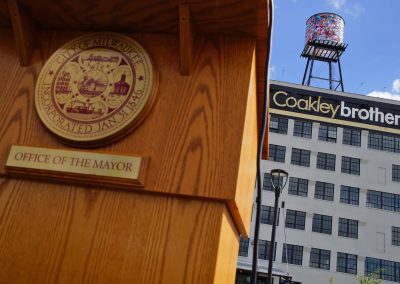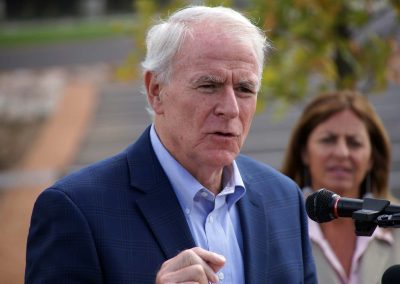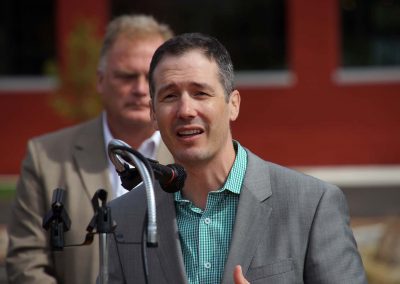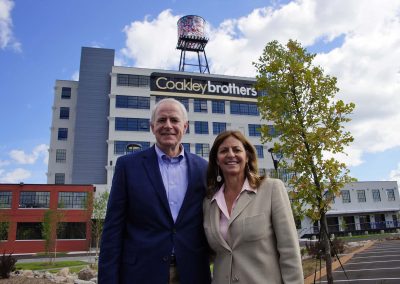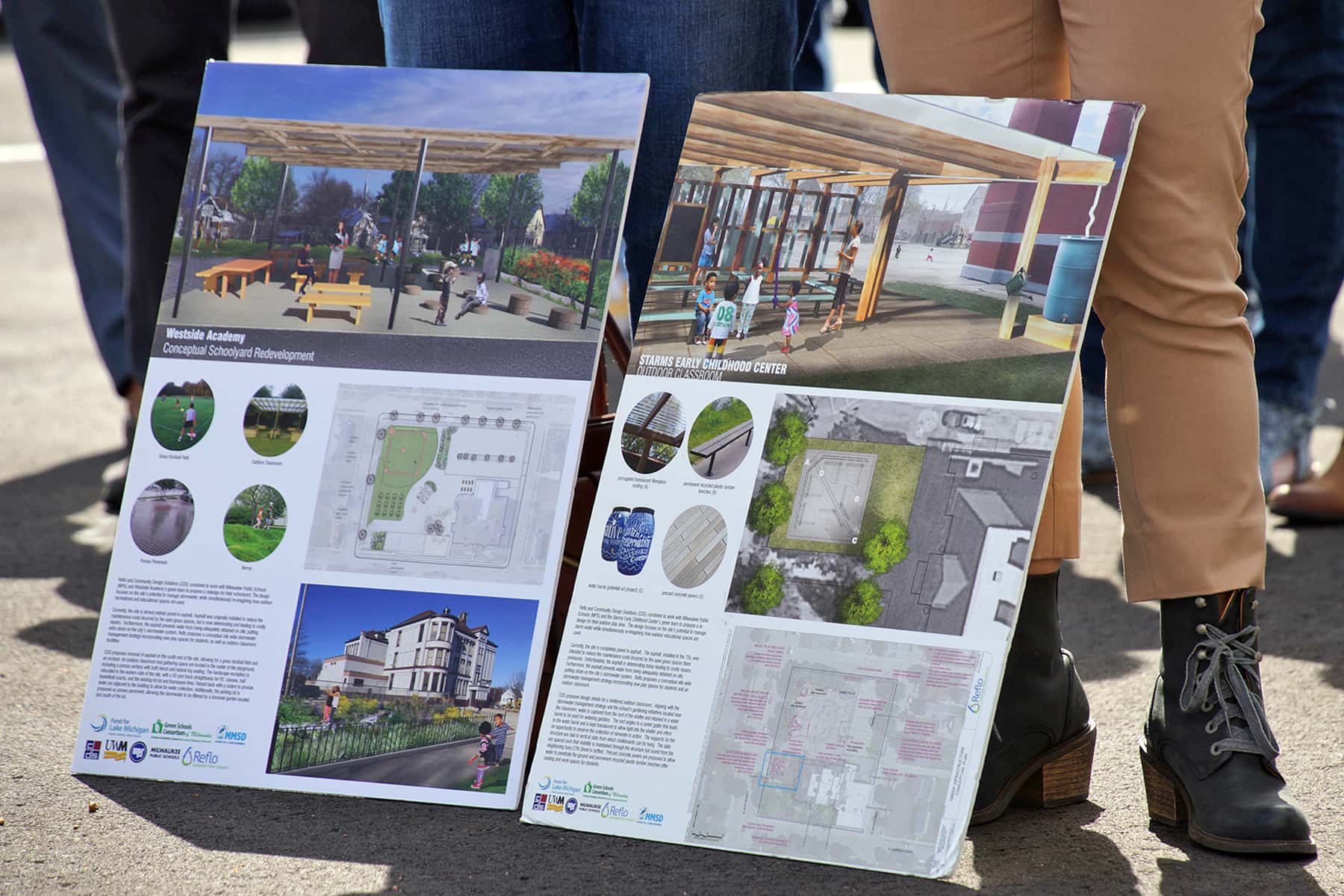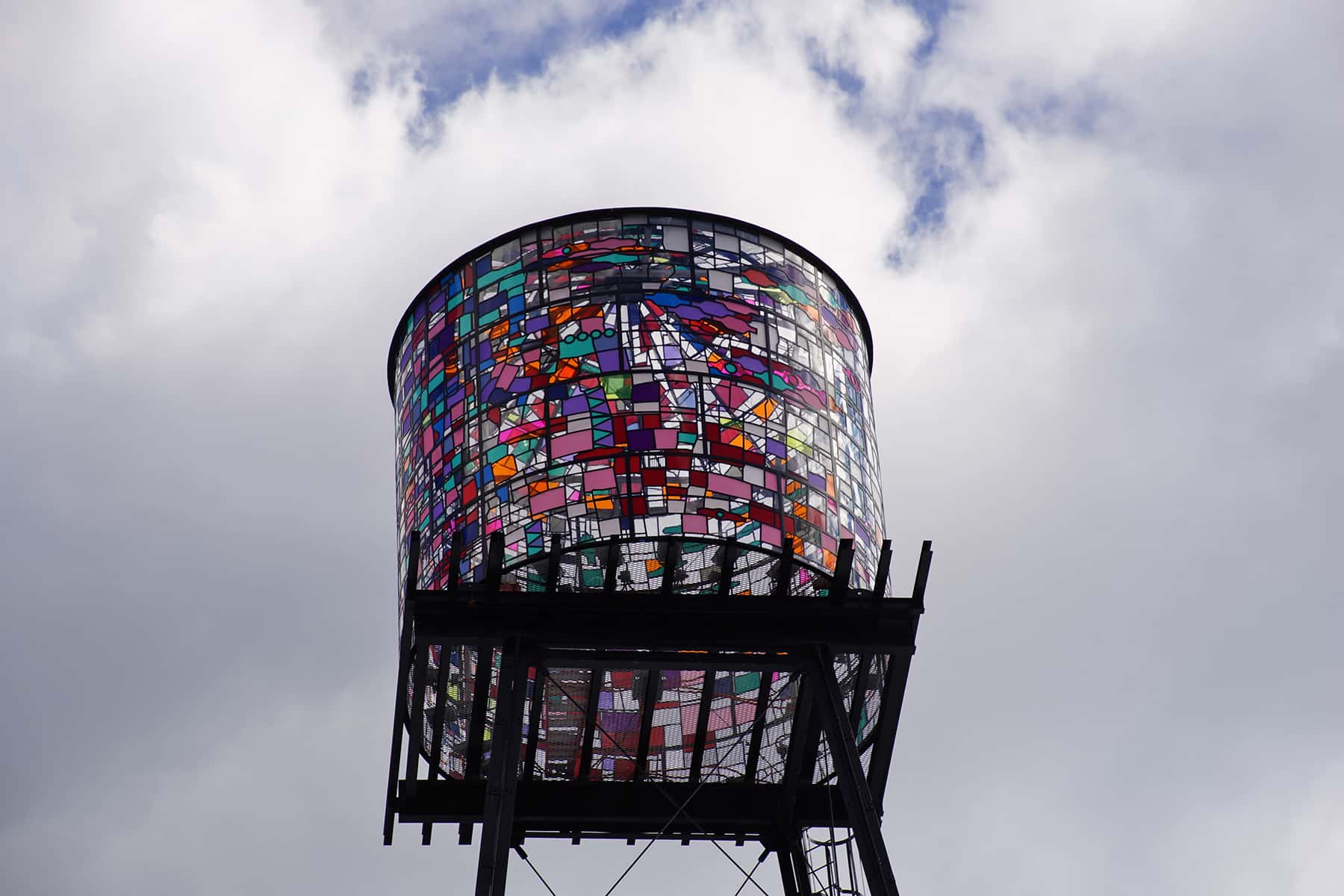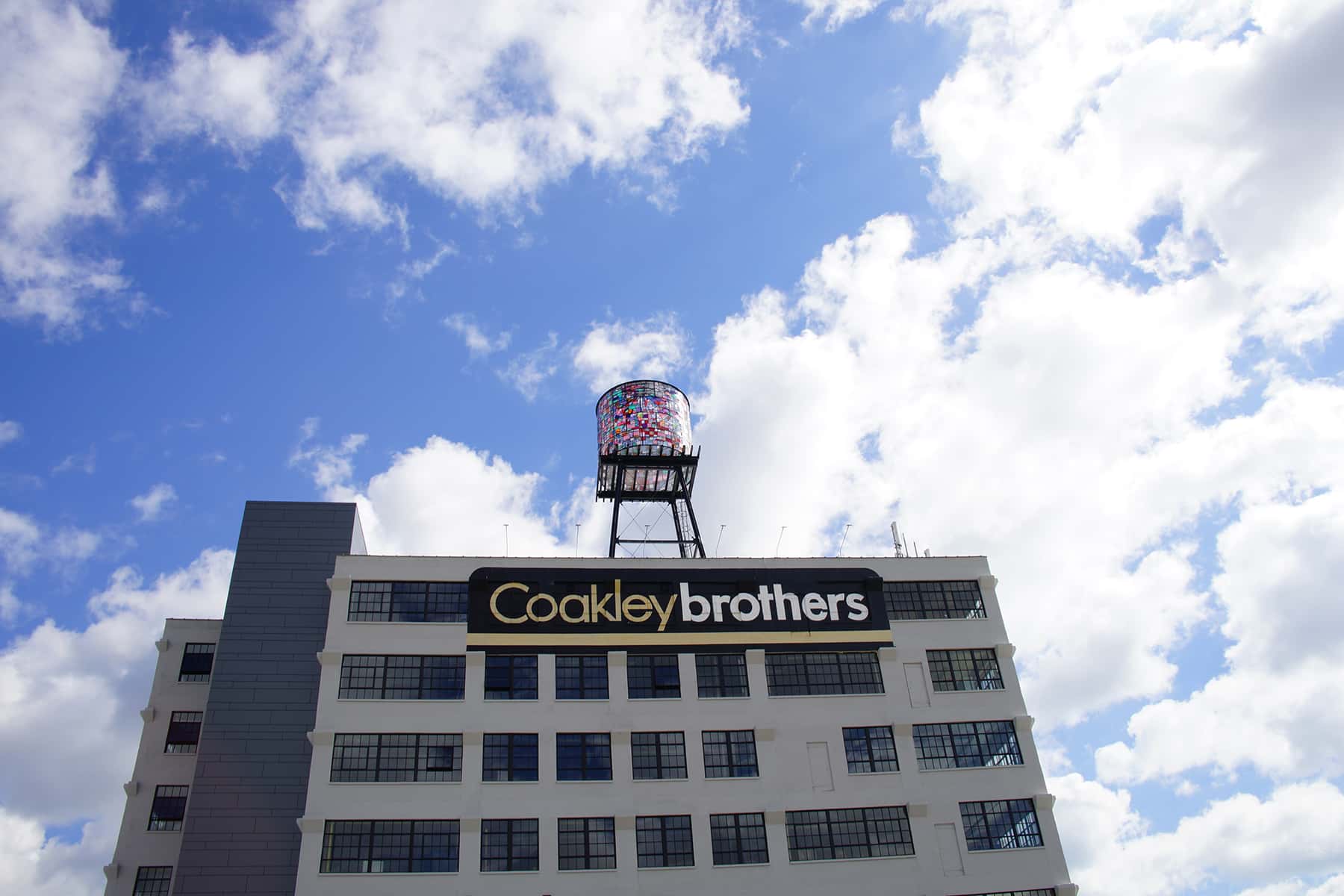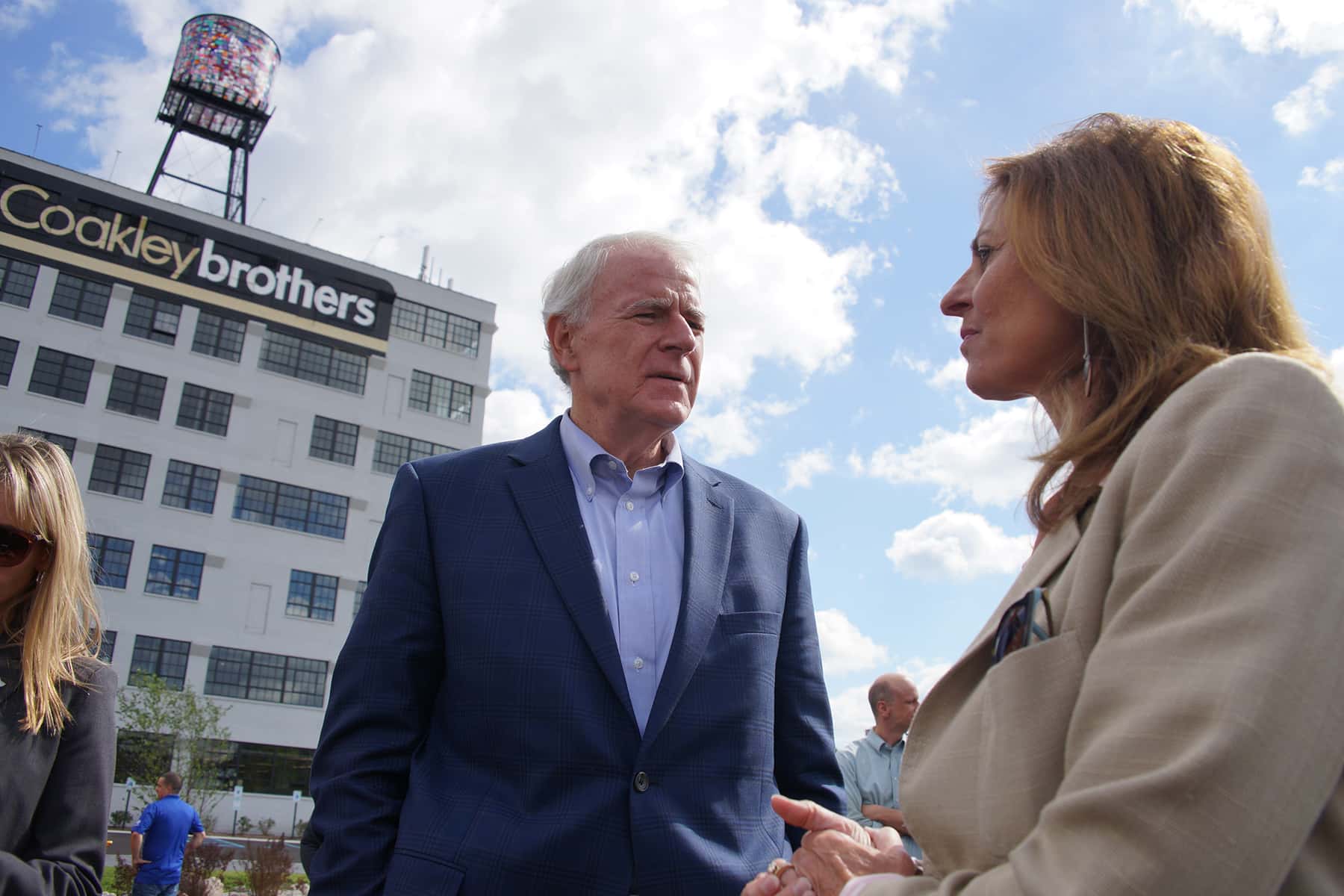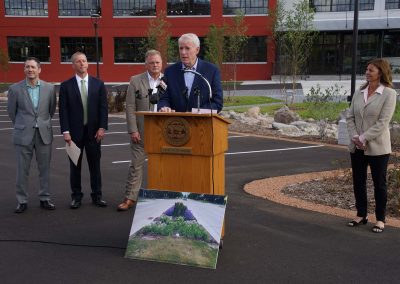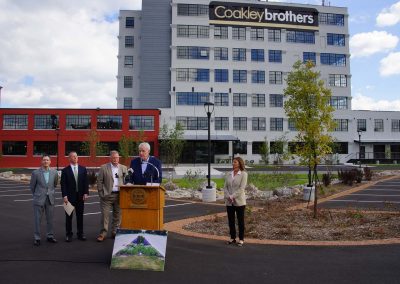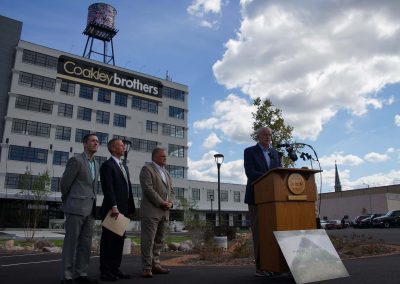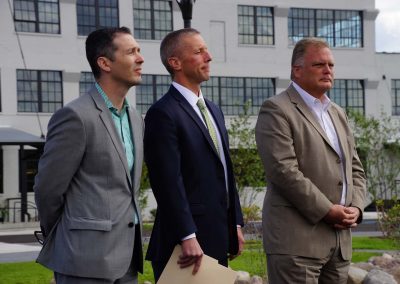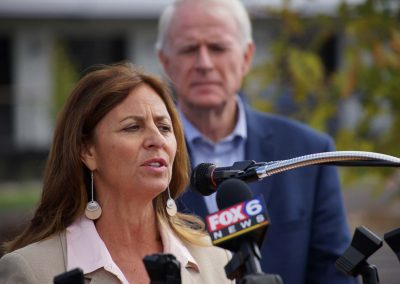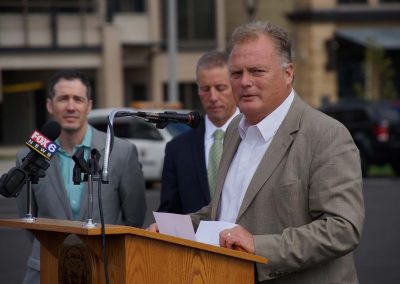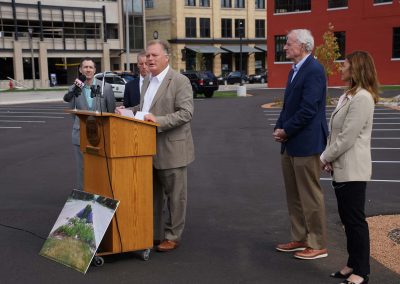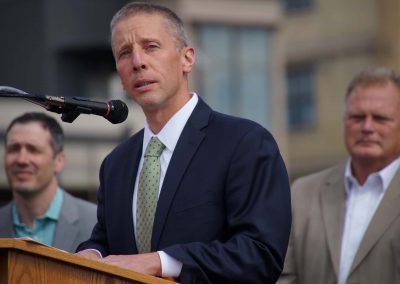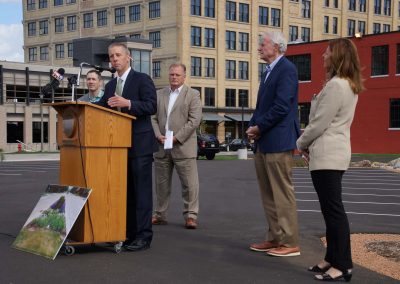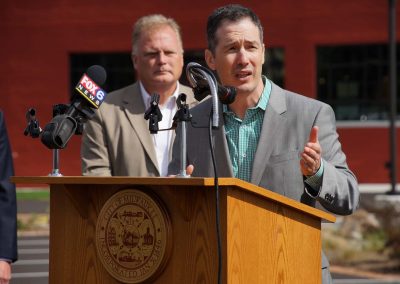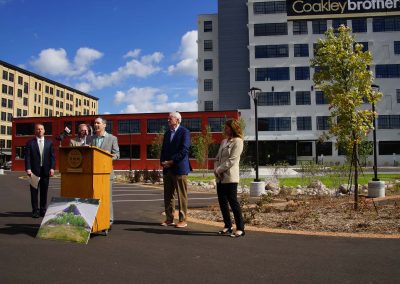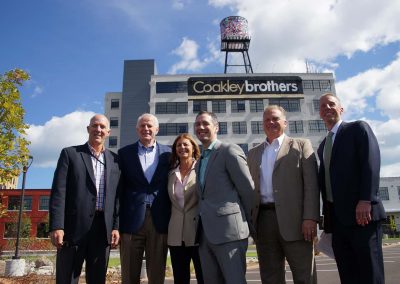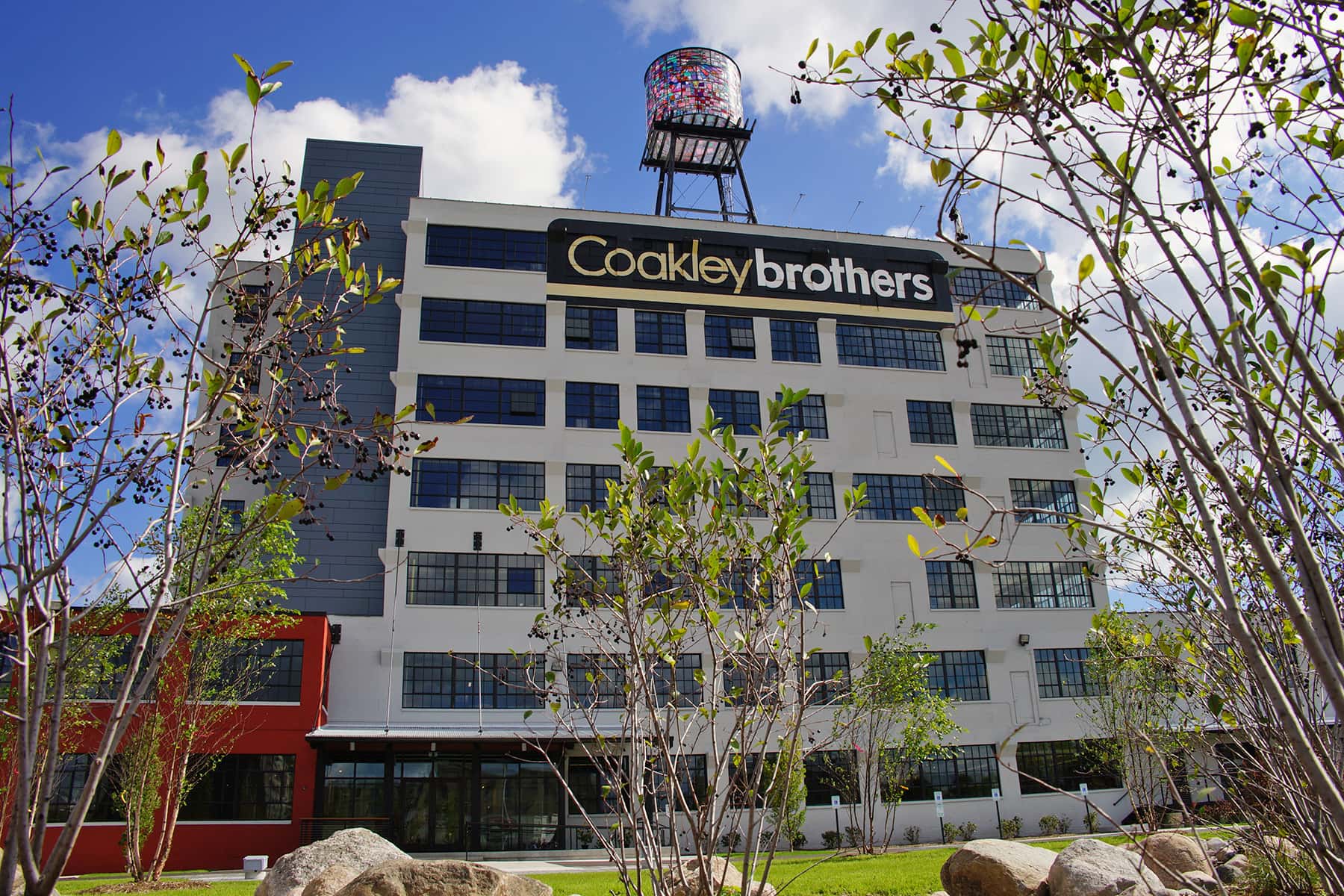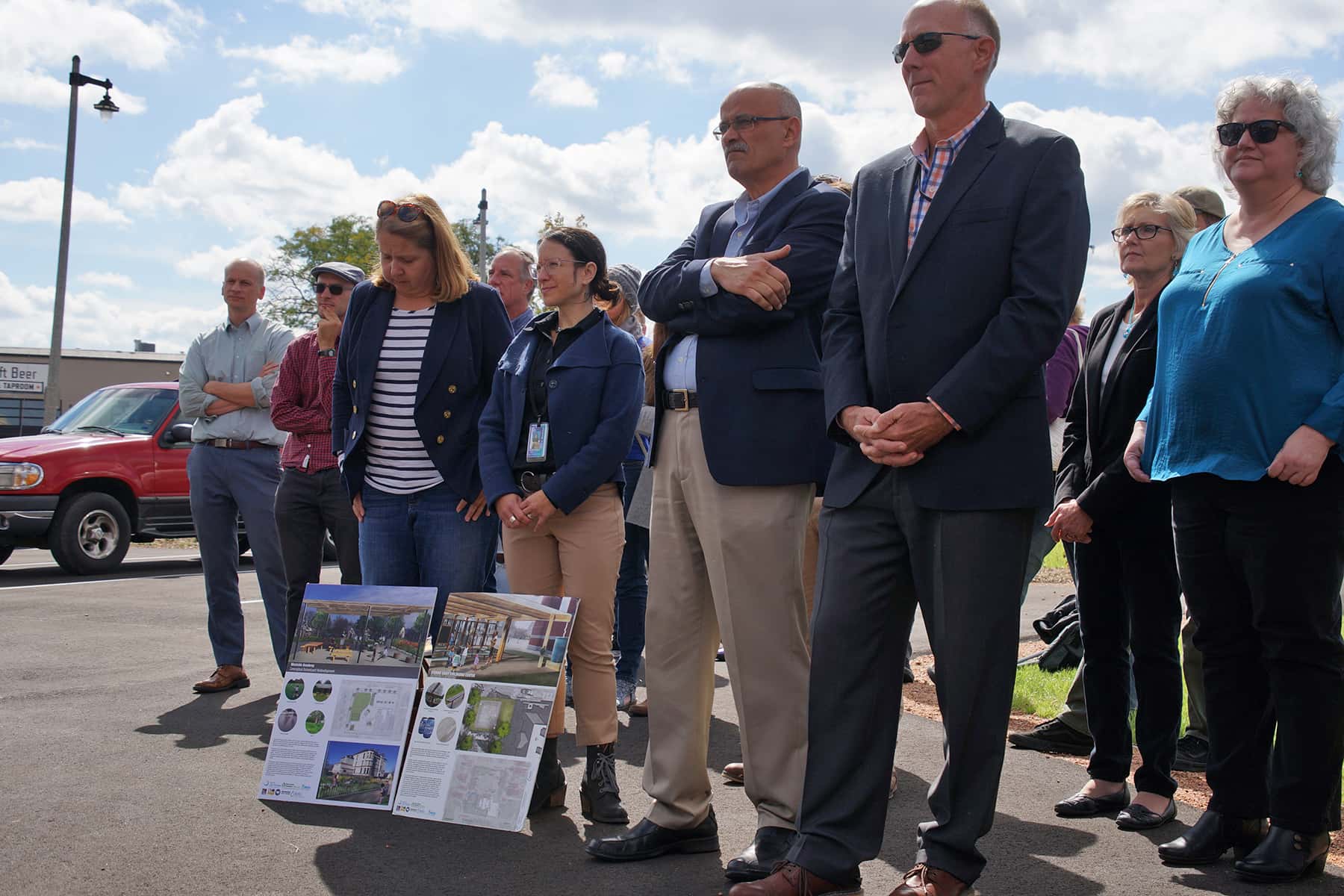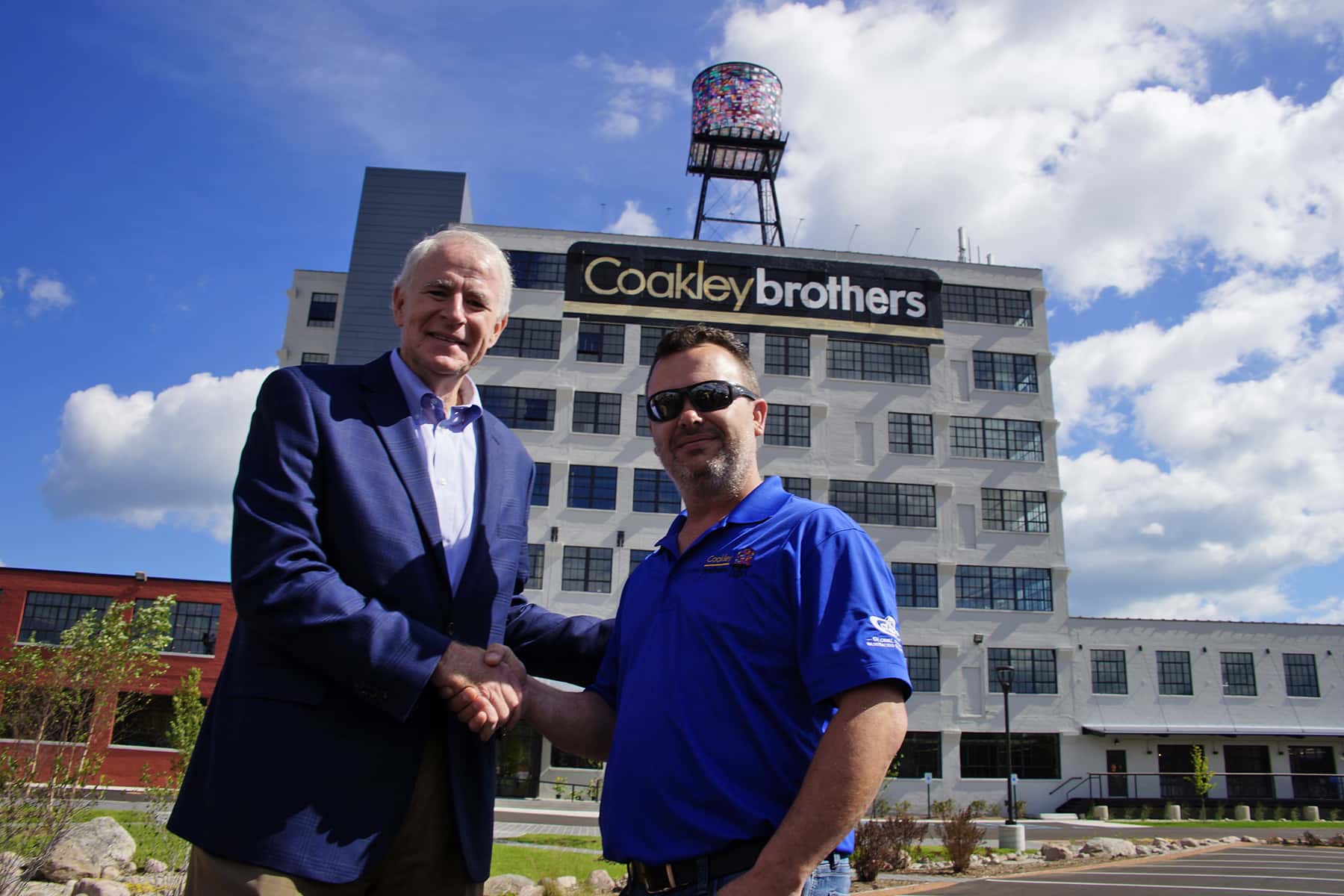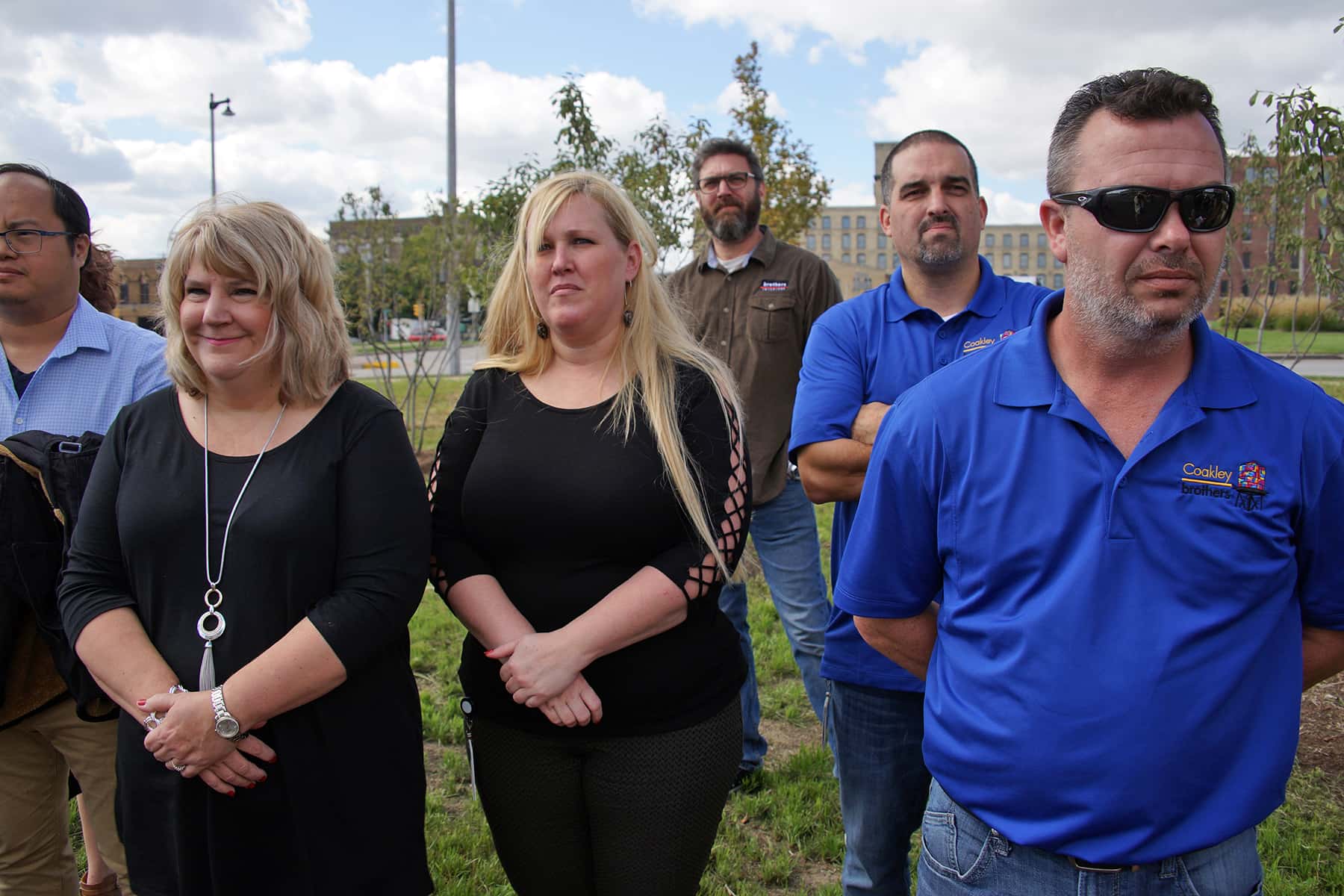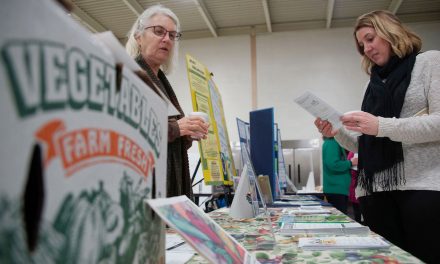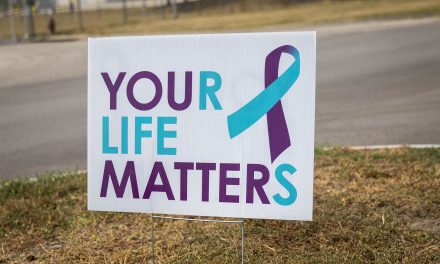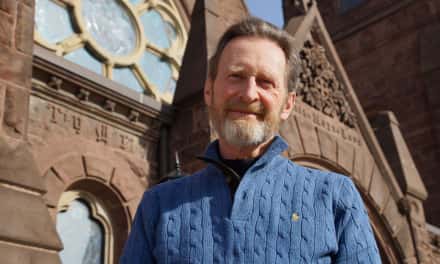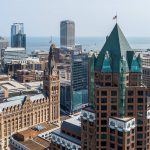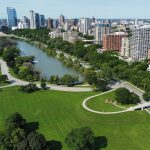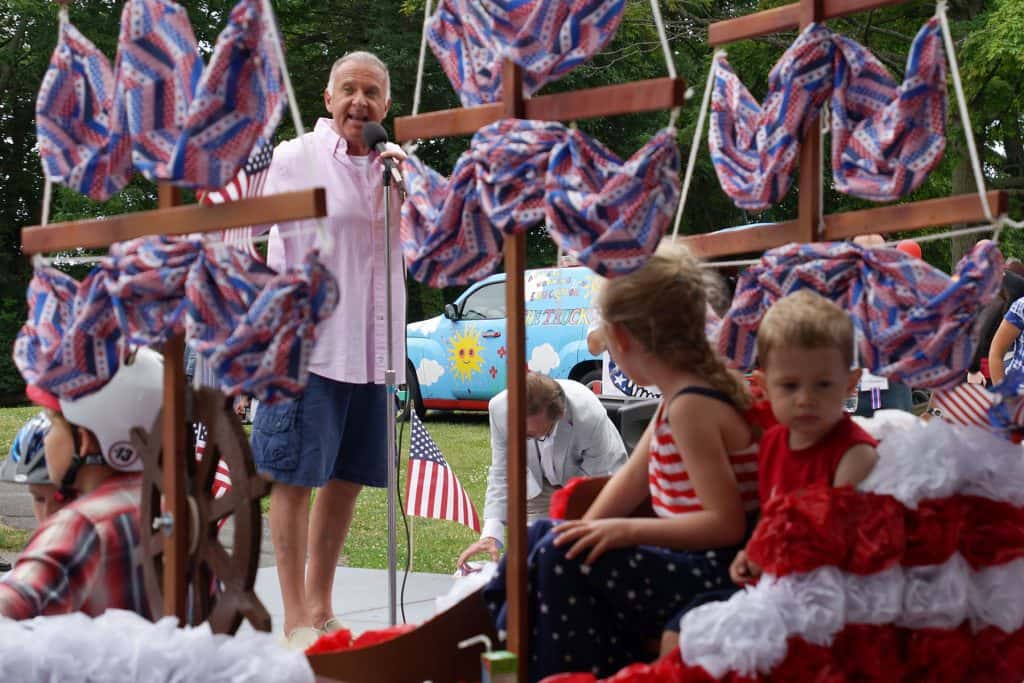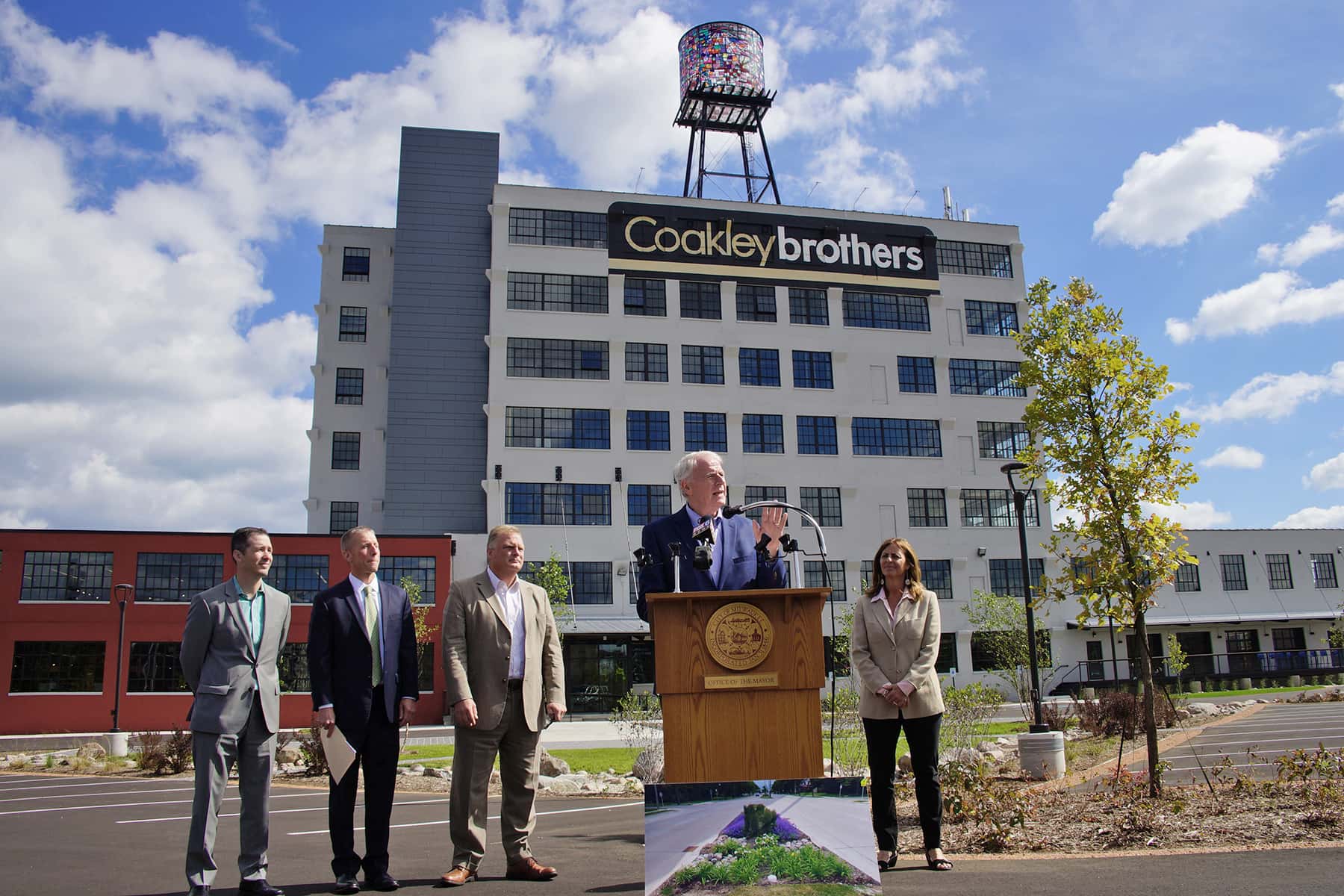
Mayor Barrett announced the City’s Green Infrastructure Plan Framework to add functional greenspace to Milwaukee streets, schools, and parking lots on September 26.
The Mayor made the announcement at Brothers Business Interiors at 400 S. 5th Street in Milwaukee. That building has undergone a major restoration and added green infrastructure to its parking lot with support from the Milwaukee Metropolitan Sewerage District and the City of Milwaukee. These improvements support a vibrant urban environment around Milwaukee’s 6th Street roundabout.
Every generation has the opportunity to reshape its environment through decisions we make about development. We are experiencing a renaissance for Milwaukee, with a building boom that started in the heart of the downtown and is now extending into our neighborhoods. As we develop, one of the principles that has been important from the outset of my administration is environmental sustainability. Environmental sustainability is good for business now, and it is essential for long-term economic growth.
And as we redevelop and grow, we have to account for one of the greatest environmental challenges of our time, which is climate change. With climate change, we can expect more extreme weather events. With extreme weather comes large amounts of rain, more rain than our sewer systems were designed to handle. In 2008 and 2010, Milwaukee experienced extreme storms and flooding. In August of this year, large sections of Wisconsin including areas around Madison experienced record rain and flooding in what is supposed to be our driest month.
This problem is made worse by the volume of pavement that we have in our streets, parking lots, and school yards. With extreme rain and too much pavement, there’s no good place for the water to go. So we run the risk of basement backups, sewer overflows, and property damage. To help adapt to climate change, we have to chart a new course. We can’t continue to pave over green space. In fact, we need to remove excess pavement and hardscapes and replace it with functional greenspace, or green infrastructure.
Green infrastructure includes things like green roofs, bioswales in parking lots, and simply de-paving large parking lots and adding good soils with grass. This kind of green infrastructure is really important for Milwaukee for a lot of reasons. First, it can help us adapt to climate change and manage risks from storms. Second, greenspace creates better urban environments to walk and play in. In the last century, developers and cities devoted far too much of our urban landscape to black-top parking lots and school yards. Shopping centers often have parking lots that are far too large for the regular volume of traffic.
And because so much of our city and shopping centers are geared toward auto traffic with very little space devoted to greenspace and landscaping, the large parking lots make it daunting for pedestrians and cyclists. And schoolyards often have kids playing games on hot asphalt. This isn’t good for kids and it’s not good for the environment. We can do better. Some of our leading developments downtown are voluntarily including green infrastructure into their developments. The Northwestern Mutual Life building and new condominium projects by the Mandel group feature green roofs.
We are seeing some of that same leadership in our neighborhoods. We are here today at Brother Business Interiors where Peggy Coakley and her leadership team have redeveloped the property and included a new green parking lot. But we can’t rely solely on volunteer efforts. To address the risk of climate threats, we need to take policy action to accelerate the adoption of green infrastructure. That’s why I’m excited to announce that the Milwaukee Common Council has adopted our Green Infrastructure Plan.
Under the Plan, all large developments and redevelopments of one acre or more will be required to use green infrastructure to capture the first 1/2” or rainfall on the site. Under current law, these large projects would have been required to develop a stormwater management plan. Under the new law adopted yesterday, these stormwater management plans will require the use of green infrastructure. This will ensure that we get all of the community benefits of green infrastructure, including more attractive and healthier urban environment. With the City leading by example, we are also supporting MMSD’s efforts to develop regional green infrastructure standards.
Another key element of the plan is increased funding to support green infrastructure projects in our streets, schoolyards, and parking lots. Next year, MMSD is increasing the funding it makes available to communities to install green infrastructure. Milwaukee is expected to have $2 million dollars available from the District to invest in green infrastructure. We have already been adding green infrastructure to our street and alley reconstruction projects. As we thought about where to put additional funds, we thought it made sense to target MPS schoolyards.
Through the Green Schools Consortium of Milwaukee, we are working with MPS to convert black-top schoolyards to functional greenspace and outdoor learning environments. With our additional investment in MPS Schools, we hope to convert at four to five school yards per year. We will also work with willing commercial and non-profit property owners who wish to de-pave portions of their parking lots to add green infrastructure.
A record amount of rainfall in Wisconsin in August of 2018 demonstrates the need for cities to prepare for the threats posed by climate change, including flooding. Cities with too much pavement and hardscape face higher flooding risks and impairments to water quality.
Under a resolution (File # 180527) and ordinance (File #180803) adopted by the Common Council on Tuesday and sponsored by Aldermen Nik Kovac, Terry Witkowski, and Cavalier Johnson, all large redevelopment projects will be required to install green infrastructure to capture at least the first 1⁄2” of rainfall on the site. The Plan also provides additional funds in 2019 to work with Milwaukee Public Schools to remove pavement and add functional greenspace to 4 to 5 schools per year. Funds will also support adding green features to public and private parking lots throughout the City.
Development of the Green Infrastructure Plan Framework was a collaborative effort between the City’s Environmental Collaboration Office, Department of Public Works, Department of City Development, Milwaukee Metropolitan Sewerage District, UWM School of Freshwater Sciences, Milwaukee Public Schools, Green Schools Consortium of Milwaukee, Marquette University Water Law and Policy Initiative, Fund for Lake Michigan, Brico Fund, and other business and environmental stakeholders.
© Photo
Lee Matz

